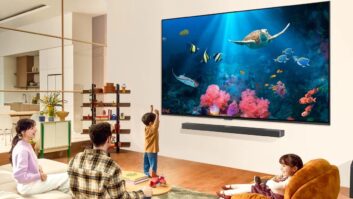LAS VEGAS -To Len Roberts’ way of thinking, bigger ain’t necessarily better, particularly when it comes to store formats.
In fact, the chairman/CEO of RadioShack Corp., which operates and franchises more than 7,000 small-footprint units, believes the era of the big-box retailer-i.e. Best Buy and Circuit City-is rapidly waning.
“Big-box retailing is a dying business,” Roberts told TWICE between vendor meetings at CES. “If retailers had to do it over again, no one would go out and get a big-store format, it’s not a growth business. They would all go to small stores.”
The story was different 10 years ago, he explained, when consumers were searching for maximum assortment at the lowest possible price. While shoppers still like bargains and wide selection, they’re now demanding a third element-value-which is where RadioShack and other service-oriented stores shine, he said. “We’re all about service and solutions. It’s like our slogan, ‘You got questions? We got answers. ‘We demystify technology for the mass market. That’s our reason for being.”
Another element that will hasten the decline of large-format stores, if not sign their death warrant outright argued Roberts, is the Internet. “Big-store formats offered big value and assortment 10 years ago, but today that’s minimized by the Internet, which is the destiny of our species. It offers the maximum number of products at the lowest possible price.”
Indeed, Roberts stands by his dramatic declaration at last year’s CES that RadioShack will derive fully 50 percent of its revenue from online transactions by 2004, albeit aided by an aggressive move into the $300 billion commercial electronics market.
What’s more, he’s convinced that within 10 years, e-commerce will assume all of the channel share currently held by big-box retailers, which in turn will shrink to current online share levels.
But there are exceptions. Roberts finds much to admire in such big-box titans as Wal-Mart, which offers “everyday low prices, lots of assortment, convenience and a friendly shopping environment,” and Home Depot, whose assortment, prices and helpful staff make for a positive shopping experience.
Meanwhile, Roberts finds validation of RadioShack’s small-store model in his stores’ financial performance, as well as in Best Buy’s planned acquisition of the mall-based Musicland chain, for which he wishes them well.
“We’re a difficult model to emulate,” he observed. “We’re a retail hybrid. We’re not a true destination store, as most of our growth is in subscription services. Eighty percent of our traffic will come in for a battery, a fuse or a diode, and our average ticket is $30. But we’ve learned how to leverage that traffic and drive gross-margin dollars. Our net profits are 13 percent.
“I have great respect for Best Buy and Circuit City. We were in that big-box business, and we couldn’t run it. It’s too low an SG&A [selling, general and administrative expense] business. In fact, Circuit’s troubles began when they went after us by emphasizing lower-end telecommunications products and other low-ticket items. You need high-ticket items to cover the high-fixed costs.”
Roberts recalled that “it took us 75 years to get where we are with our RadioShack stores. The average conversion rate in malls, for example, is 25 percent. Ours is well over 50 percent. You have eight different stores, plus kiosks, selling wireless phones in malls, yet we sell more than 4 million phones a year-more than all of them combined. We have 6 million service subscribers and are doing $100 million in recurring revenue. I would be shocked, and would buy Dick Schulze dinner, if Best Buy has more than $500,000 in residuals.”
“Circuit City can’t make money on its [mall-based] Express stores,” he added, “and three years from now Best Buy will also falter.”













